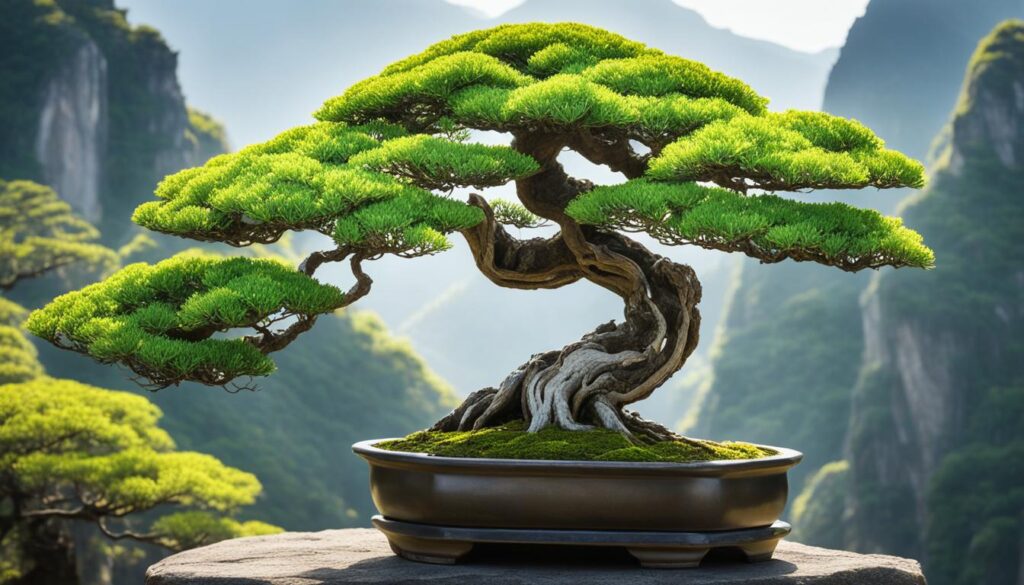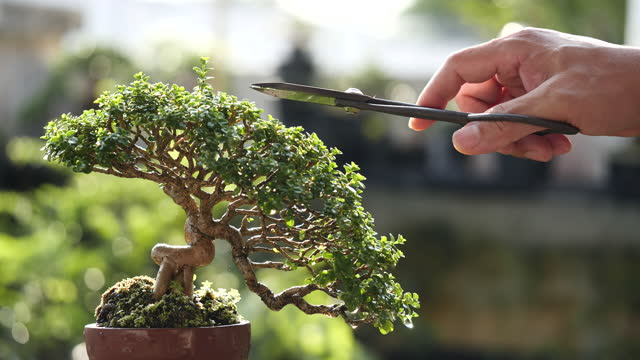Welcome to the fascinating world of Yamadori Bonsai! If you have a passion for bonsai trees and are looking to take your collection to the next level, yamadori bonsai is an art form that you simply cannot ignore. In this comprehensive guide, we will explore the beauty and intricacies of yamadori bonsai and provide you with essential insights and techniques to help you grow and care for your own stunning bonsai collection.
Yamadori bonsai is more than just a hobby – it’s an expression of art and a connection to nature. By collecting trees from the wild, you have the opportunity to transform them into living works of art that embody the essence of their origins. With its rich history and aesthetic appeal, yamadori bonsai is a captivating art form that is cherished by bonsai enthusiasts around the world.
In this guide, you will discover where to find opportunities for yamadori collecting, the essential steps for successful collection, and how to care for your newly collected trees. We will also delve into the unique allure of yamadori bonsai, with a focus on the age, character, and stories behind these magnificent trees. Embracing imperfections and showcasing the beauty of nature’s flaws is a hallmark of yamadori bonsai.
Whether you are a seasoned bonsai enthusiast or just starting out, this guide is your key to unlocking the world of yamadori bonsai. We will guide you through the entire journey – from finding the perfect tree to shaping, potting, and caring for your bonsai. By the end of this guide, you will have the knowledge and confidence to create your own remarkable yamadori bonsai collection.
So, let’s embark on this enchanting bonsai adventure together. Get ready to explore the art, techniques, and joy of yamadori bonsai. Your journey starts here!
The Unique Allure of Yamadori Bonsai
Yamadori Bonsai is more than just a hobby or art form; it is a connection to nature and a celebration of the unique qualities that only wild-grown trees possess. Understanding the origins of yamadori bonsai and the techniques used to transform them into living art is essential to appreciating the allure of these bonsai trees.
Understanding Yamadori: From Wild Origins to Bonsai Art
Yamadori bonsai originated in Japan and refers to the practice of collecting trees from the wild and training them into miniature masterpieces. The process begins with carefully selecting a suitable tree with desirable bonsai characteristics such as interesting bark, compact foliage, and a well-developed trunk. This connection with nature and the act of nurturing these trees bring a sense of harmony and tranquility to bonsai enthusiasts.
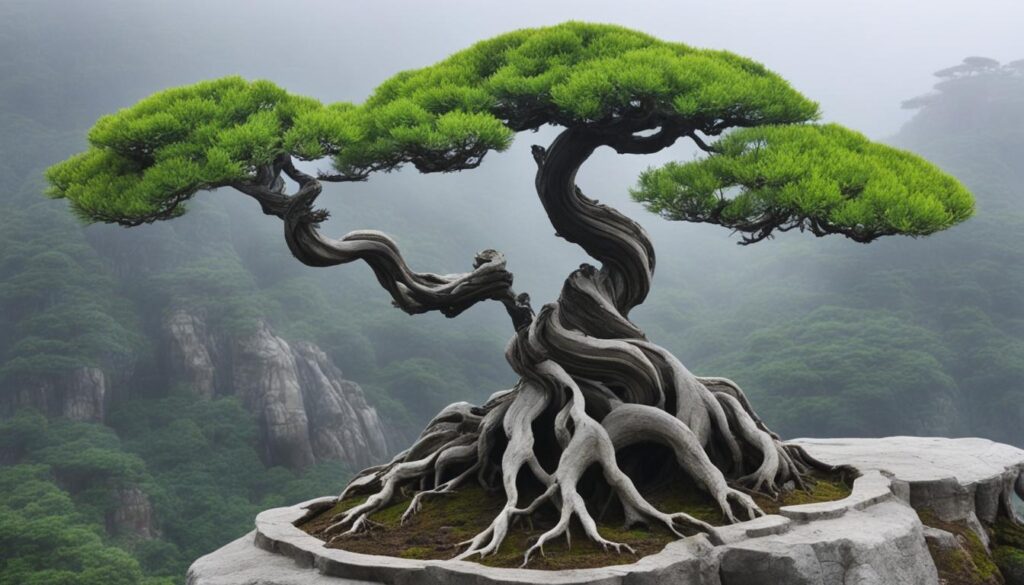
Why Yamadori Bonsai Stand Apart: Age, Character, and Story
Yamadori bonsai trees stand apart from nursery-grown bonsai due to their age and the unique character they exhibit. These trees have endured the elements of nature for years, resulting in a distinct charm and maturity. Each tree has its own story, which becomes a part of the bonsai art. Whether it’s the bend of a branch or the twist of the trunk, these imperfections tell a story and add depth and authenticity to the bonsai collection.
The Appeal of Imperfection: Embracing Nature’s Flaws
Imperfections in yamadori bonsai are not considered defects but rather reflections of the natural world. Bonsai artists embrace these imperfections, as they add a sense of authenticity and a connection to the untamed beauty of nature. The irregularities in the trunk, the unique branching patterns, and the weathered appearance all contribute to the allure of yamadori bonsai. Embracing these imperfections is an integral part of the art form and enhances the overall aesthetic appeal.
Where to Find Yamadori Bonsai Opportunities
If you’re ready to embark on the adventure of collecting yamadori bonsai, you’re in for an exciting journey of discovering wild trees and transforming them into living works of art. Finding yamadori bonsai opportunities requires exploring various sources and locations. Let’s explore some of the best places where you can find these breathtaking wild bonsai trees.
1. Wilderness Areas and Forests: Start your search for yamadori bonsai in natural habitats such as national parks, forests, and wilderness areas. These untouched landscapes offer a wealth of opportunities to find unique and ancient trees ready to be shaped into stunning bonsai specimens.
2. Urban Landscapes: Surprisingly, you can find yamadori bonsai even in urban environments. Old and neglected city parks, abandoned lots, and forgotten corners of urban settings can harbor hidden gems waiting to be discovered and given new life as bonsai trees.
3. Private Property: With proper permission, private properties can be a fantastic source for yamadori bonsai. Some landowners may allow bonsai enthusiasts to collect wild trees from their land, especially if it benefits the health of the environment or contributes to the preservation of the landscape. Always seek permission and respect the landowner’s guidelines.
To ensure a responsible and sustainable approach to collecting yamadori bonsai, it is crucial to obtain proper permission before collecting from any location. Respect the natural environment and adhere to local regulations to preserve the beauty and health of these wild trees for future generations.
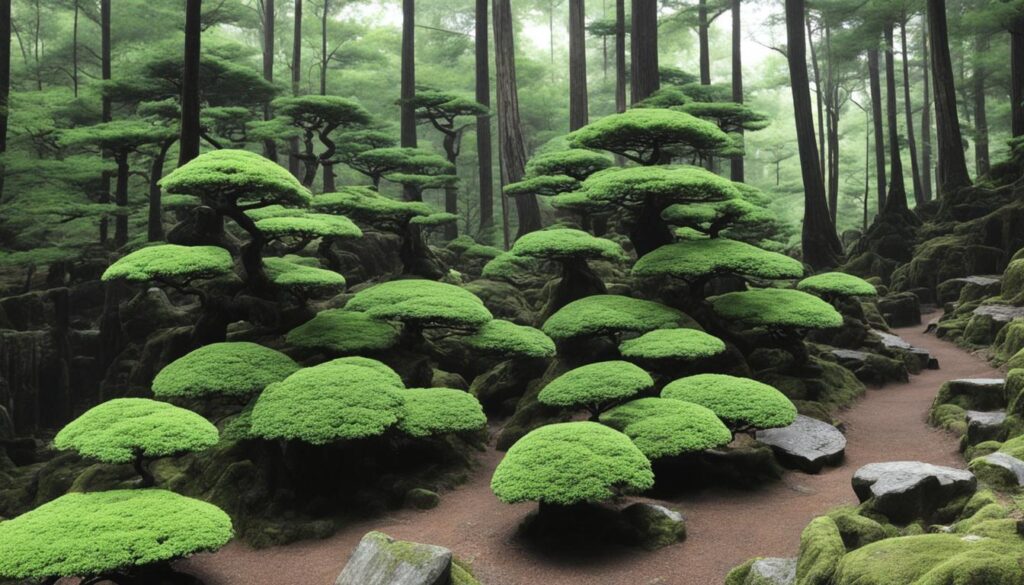
Essential Steps for Collecting Yamadori Bonsai
Collecting yamadori bonsai requires careful planning and execution to ensure the health and survival of the trees. In this section, we will cover the essential steps for successful yamadori bonsai collection. This includes securing permission to collect from the landowner, acquiring the necessary tools for digging and transporting, and employing techniques to preserve the tree during excavation and transport. By following these steps, you can minimize the stress on the tree and increase its chances of thriving in its new environment.
Securing Permission: Legal Aspects of Harvesting Yamadori
Before embarking on your yamadori bonsai collecting journey, it is crucial to understand and adhere to the legal aspects of harvesting yamadori. Depending on your location, regulations may vary regarding the collection of plants from public lands or private property. Prior to collecting, always seek permission from the landowner or appropriate governing authorities to ensure you are operating within the bounds of the law.
Tools of the Trade: What You Need for Successful Collecting
The right tools are essential for a successful yamadori bonsai collection. Here are some tools you should have in your arsenal:
- Bonsai Digging Spade: This specialized spade is designed to dig around the root ball of a tree without damaging the delicate roots.
- Bonsai Pruning Shears: These sharp cutting tools are used to trim branches and roots during collection and maintenance.
- Bonsai Wire Cutters: Wire cutters are necessary for removing any wire that may have been used to shape or secure the tree.
- Bonsai Training Wire: This wire is essential for shaping and styling the branches of your yamadori bonsai.
- Bonsai Root Rake: A root rake helps to gently untangle and separate the roots during the collection process.
Having these tools readily available will ensure that you can safely and effectively collect yamadori bonsai.
Preserving the Tree: Techniques for Safe Excavation and Transport
Preserving the tree during excavation and transport is crucial for its survival. Here are some techniques to help minimize stress and increase the chances of success:
- Plan Ahead: Before starting the collection process, thoroughly research and understand the specific needs of the tree you are collecting, including its preferred soil conditions and exposure to light.
- Prepare the Tree: Trim back excess foliage and remove any dead or damaged branches. This will reduce the tree’s overall weight and stress during transport.
- Excavate Carefully: When digging up the tree, ensure you excavate a root ball large enough to preserve the majority of the tree’s feeder roots. Use the bonsai digging spade to carefully loosen the soil around the root ball.
- Wrap and Secure: Once the tree is excavated, wrap the root ball in damp burlap or a similar material to retain moisture. Secure the wrapped root ball with twine or a bungee cord to prevent it from shifting during transport.
- Transport with Care: Place the wrapped root ball in a sturdy container or specialized bonsai transport box, ensuring that it is secure and well-supported. Avoid exposing the tree to extreme temperatures or excessive vibrations during transport.
By employing these techniques, you can increase the chances of successfully transplanting your yamadori bonsai while minimizing stress and ensuring its long-term preservation.
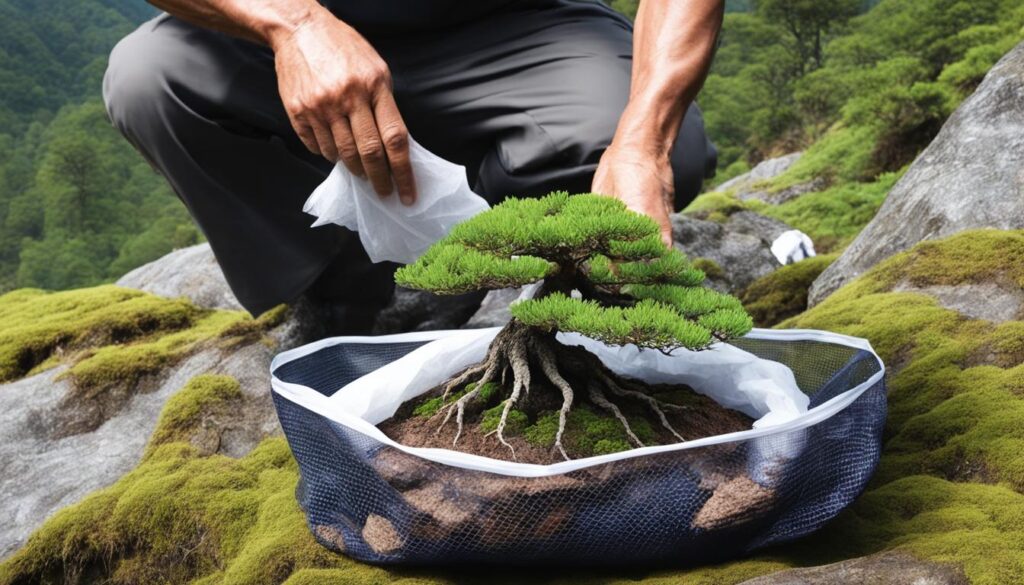
Yamadori Bonsai: Setting the Stage for Growth
Once you have successfully collected a yamadori bonsai, it is essential to set the stage for its growth and development. This section will cover important considerations such as choosing the right time to collect bonsai, initiating the bonsai journey by potting the tree, and selecting the appropriate soil and composition for optimal growth. Creating the right environment is crucial for ensuring the health and vitality of your newly collected yamadori bonsai.
Choosing the Right Time: When to Collect Bonsai
Timing is crucial when collecting bonsai, including yamadori bonsai. It is important to consider the specific characteristics of the tree you are collecting and the climatic conditions of your region. Generally, the best time to collect yamadori bonsai is during the dormant season, either in late winter or early spring. This is when the tree is more resilient to the stress of transplantation and has minimal leaf growth. By choosing the right time to collect your bonsai, you will maximize its chances of successful establishment and growth.
The First Pot: Initiating the Bonsai Journey at Home
After collecting your yamadori bonsai, the next step is to initiate its journey as a bonsai by potting it. Selecting the appropriate pot is essential for the tree’s growth and aesthetics. Consider the size and shape of the tree, ensuring that the pot provides enough stability and space for root growth. Additionally, choose a pot that complements the tree’s character and suits its overall design. Potting your yamadori bonsai properly will give it a solid foundation to thrive and continue its transformation into a living artwork.
Soil Selection and Composition: Creating the Optimal Environment
Selecting the right soil composition is crucial for creating an optimal environment for the growth and health of your yamadori bonsai. Bonsai soil should have good drainage to prevent excess moisture that can lead to root rot. It should also provide adequate moisture retention to ensure the tree receives the necessary water and nutrients. A common soil mixture for yamadori bonsai includes a combination of inorganic components like Akadama, pumice, and lava rock. Finding the right balance of these components will promote healthy root development and overall growth of your yamadori bonsai.
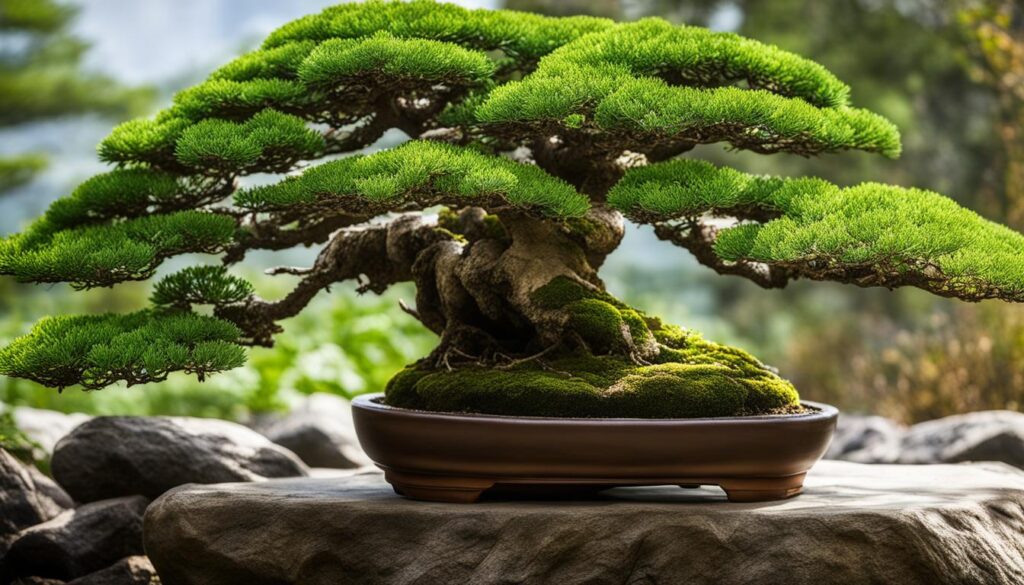
By following these guidelines for setting the stage for growth, you will provide your Yamadori bonsai with the ideal conditions to thrive and flourish. Remember, successful Yamadori bonsai cultivation requires patience, attention to detail, and a deep appreciation for the beauty and artistry of these unique trees.
Caring for Your Newly Collected Yamadori Bonsai
Proper care and maintenance are essential for the long-term health and thriving of your newly collected Yamadori bonsai. As you embark on this exciting bonsai journey, it’s important to understand the key aspects of caring for your bonsai tree.
First and foremost, watering your Yamadori bonsai correctly is crucial. Bonsai trees have unique watering needs, and finding the right balance is essential. Be sure to water your bonsai regularly, checking the moisture level of the soil to avoid over or under watering. Consistency is key to ensuring your bonsai receives the proper hydration it needs.
Another important aspect of bonsai care is pruning. Regular pruning helps maintain the desired shape and size of your Yamadori bonsai, encouraging healthy growth and preventing overcrowding. Trim back any excess foliage and branches, keeping your bonsai’s overall aesthetic in mind. Remember, pruning is an ongoing process that requires attention and precision.
In addition to watering and pruning, fertilizing your Yamadori bonsai is essential for its health and vitality. Bonsai trees require nutrients to thrive, and a balanced fertilizer specifically formulated for bonsai is recommended. Follow the instructions on the fertilizer packaging to determine the appropriate frequency and amount of application.
By understanding the unique needs of Yamadori bonsai and providing the necessary care and attention, you can ensure the continued growth and beauty of your bonsai collection. With the right care, your Yamadori bonsai will flourish and bring you joy for many years to come.
This page contains some affiliate links. Please check out our affiliate disclaimer for more information

Karen Phillips, Bonsai expert and blogger. Read more about me here

